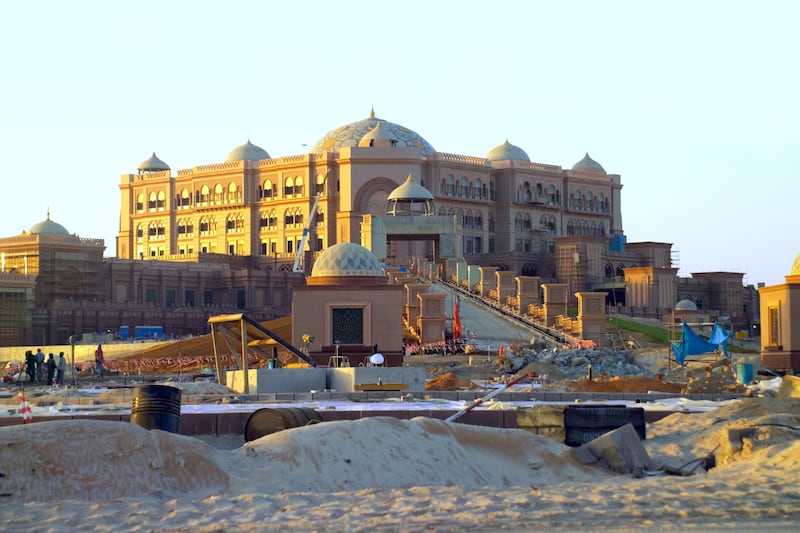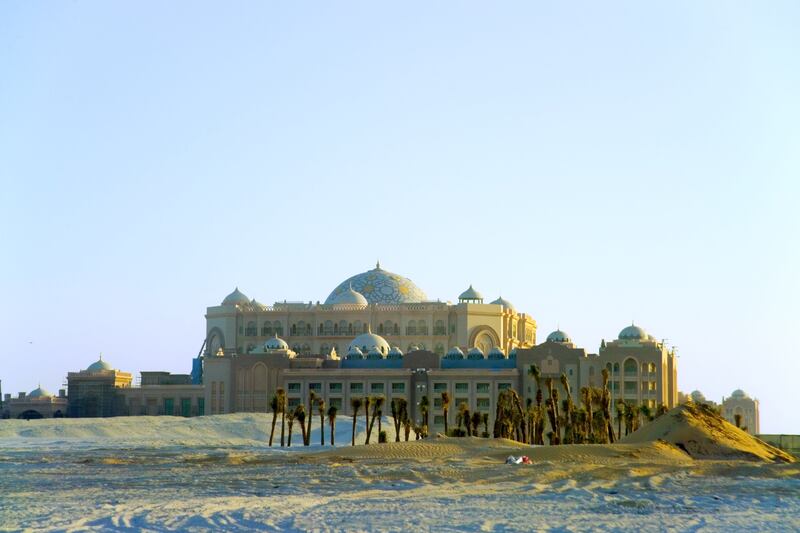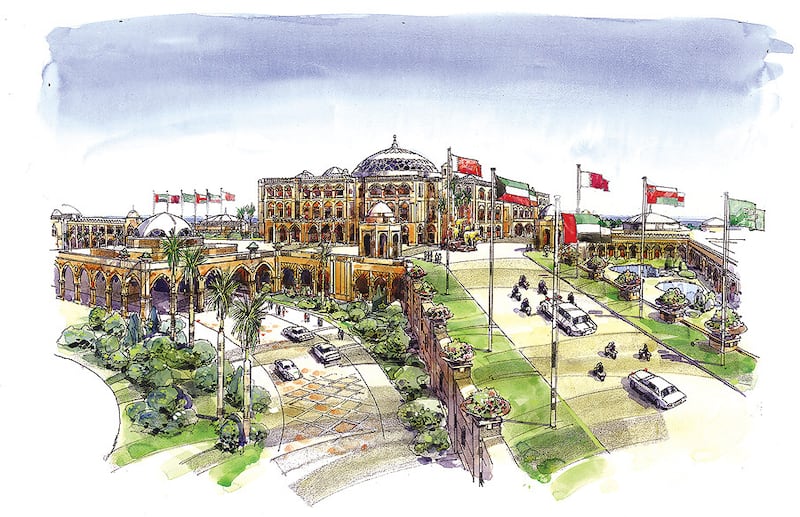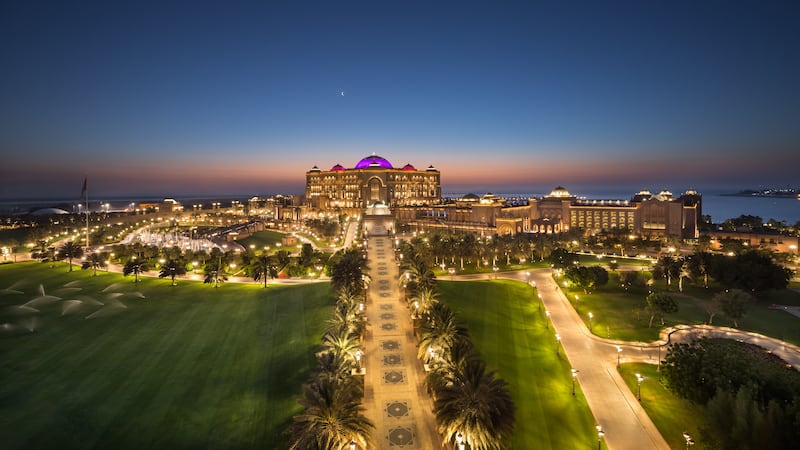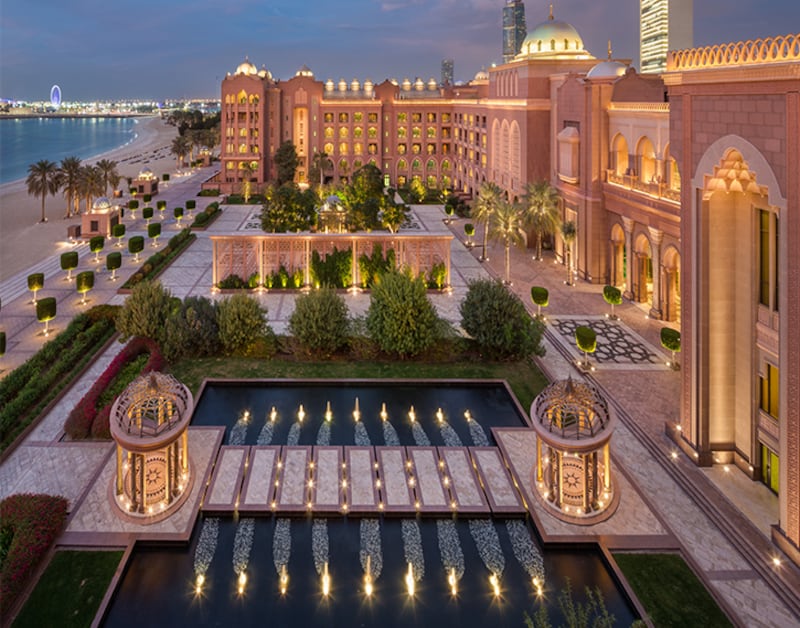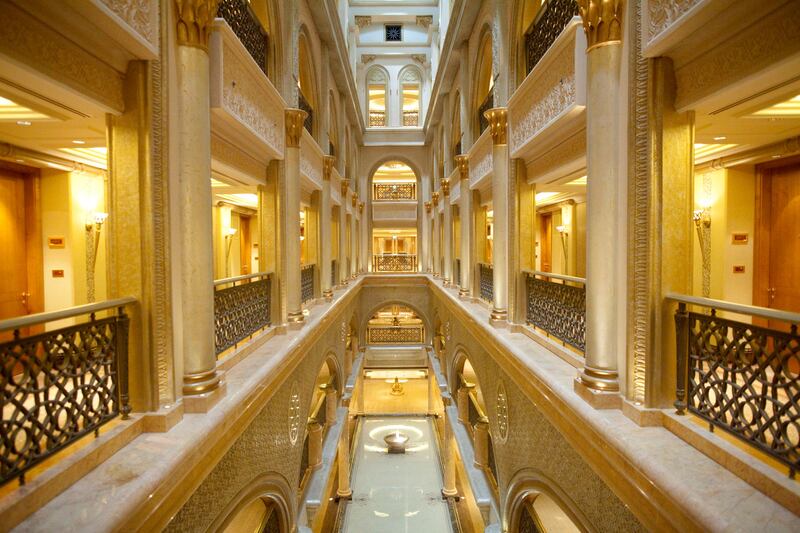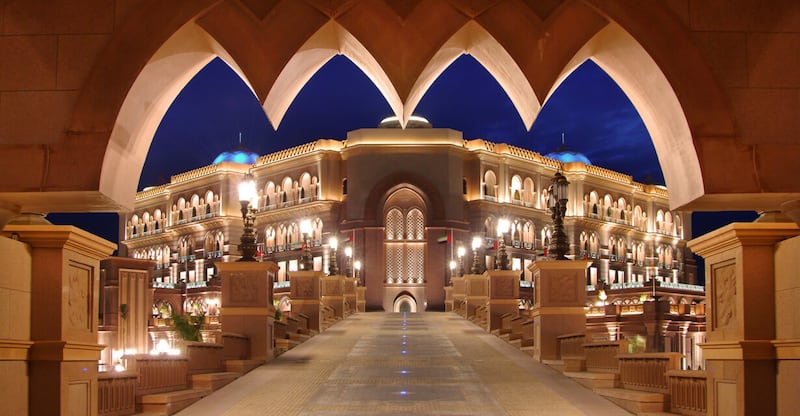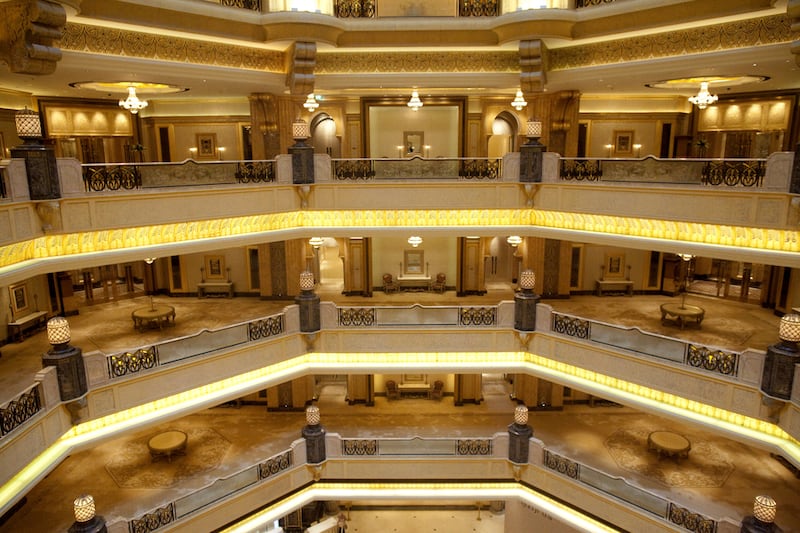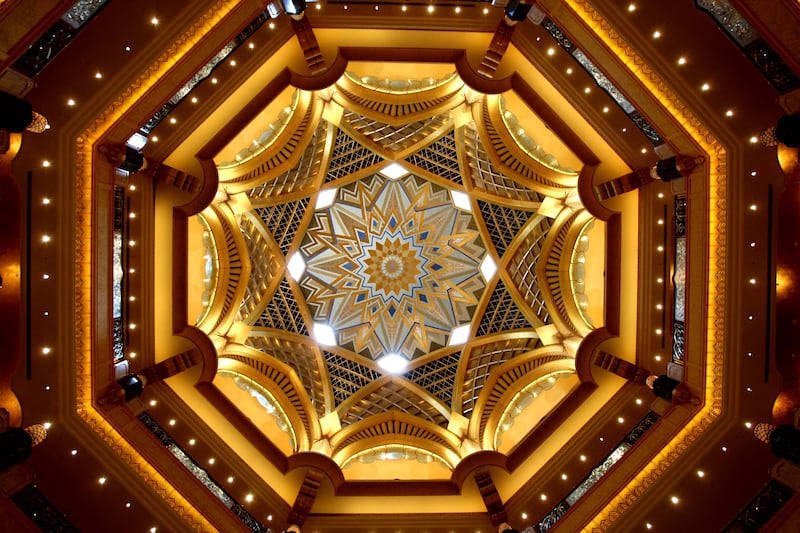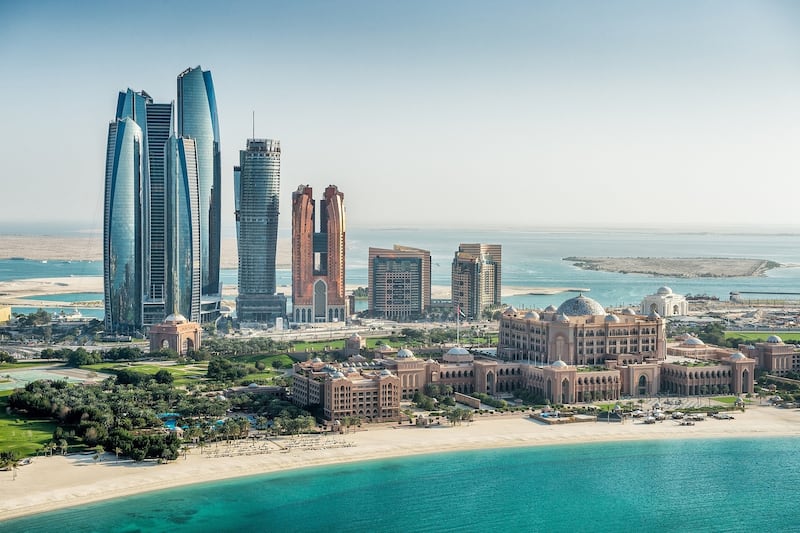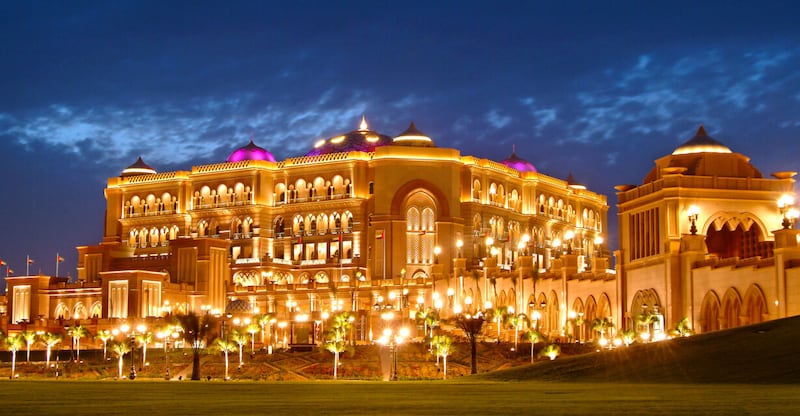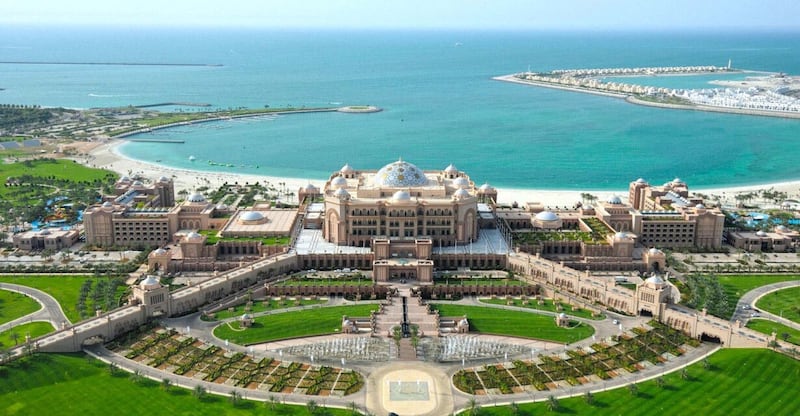They are just some of the buildings that define the UAE. But what is the story behind them? In the fifth part of our summer series celebrating the country’s architecture, we look at the history behind Abu Dhabi's Emirates Palace.
The Hilton was Abu Dhabi’s first five-star hotel and a Corniche landmark that ushered in a new era of internationalism for the city.
When it opened in 1973, the Hilton brought with it delicacies such as smoked salmon, and signalled to the world the emirate had arrived.
As the city grew during the 1980s and 1990s, new hotels opened that challenged Hilton’s supremacy.
But by the early 2000s, a new hotel was planned that would eclipse them all.
In the very rooms of the old Hilton in the early 2000s, a team from one of the world’s top architectural firms was overseeing something special being built only a stone’s throw away.
This red-hued structure, already rising on the Corniche, would become a global landmark and major tourist attraction as much as a top hotel.
About 20 years on, one of the architects behind Emirates Palace has reflected on how they designed one of the world’s most exclusive hotels.
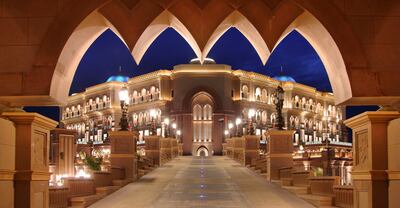
'Intriguing new project'
Jeremy Heyes, of the global architectural firm Wimberly, Allison, Tong and Goo (WATG), remembers a call coming through from Abu Dhabi about an intriguing new project that had to be ready by December 2005.
“Abu Dhabi had been chosen to host the next GCC summit,” Mr Heyes told The National. “It was incredibly significant and there was massive ambition to get it done as quickly as possible. Not only had we won [the design brief], there was a huge amount of protocol about how the place was organised.”
WATG sent a team to Abu Dhabi to oversee the project as it rose from the site at Ras Al Akhdar. At its peak, 80 design professionals from the firm worked on site, including interior designers, architects and engineers.
Mr Heyes, who is from the UK, said he spent 70 per cent of his time in Abu Dhabi during the project working under chief architect, John Elliott, who died in 2010. About 20,000 construction workers made it happen.
WATG’s design starts to work before a guest even gets into the main building. The hotel, in an elevated position, can be seen from kilometres away and the drive up to the entrance slowly takes people through gardens, past water fountains and under arches. “It is clearly meant to be inspiring,” said Mr Heyes. “The arrival sequence is meant to heighten expectations.”
From there guests are brought into the reception area and, then, ushered in under the spectacular 72.6 metre dome. “Floor to ceiling, it is one of the biggest internal spaces you get anywhere in the world. It is physically bigger than St Paul’s Cathedral. It is absolutely enormous, yet feels like a sanctuary,” said Mr Heyes. “It is beautiful and serene.”
Emirates Palace has 114 domes, 1,002 crystal chandeliers, more than 92,900 sq m of marble, 200 fountains, a triumphal arch and pristine white sand imported from Algeria for the beach.
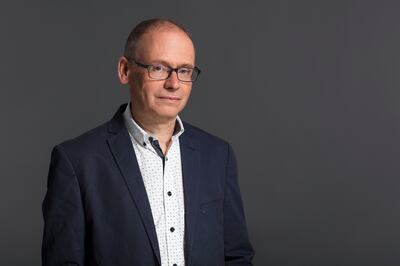
The design speaks to a classical regional architectural language through this use of domes, columns, arches and light. It was important, Mr Heyes said, that it did not ape other styles or recreate structures such as a Mughal palace. One of the reasons the hotel feels serene, he said, is that modern laser-cutting techniques allowed them to use larger pieces of granite in places such as the floors than was previously possible.
“The reason why Emirates Palace is a calmer design is because we supersized it,” said Mr Heyes. “Look at the floor in the main space: that is jet-cut granite that is supersized. That is why I think technology influenced how we designed it.”
Inside, there is a blend of natural stone, antique gold and mother of pearl, while the stone of the hotel’s exterior reflects the deep red sand of Al Ain.
“As the sun sets, it hits the sands and the colour turns pink. That’s the inspiration. It is also practical and means if there is a dust storm we are not white, and don’t have to get the jet washer out.”
One of the most interesting facets to the project was the relative rarity of a palace being situated on a beachfront. “Beaches are about swimming and people in bathing suits yet a palace is about significant royal events,” said Mr Heyes. “It was an extraordinary choice of site and pretty visionary.”
Apart from the private chambers and rooms for the royals attending the 2005 GCC summit, it also boasts a massive theatre the size of any West End facility and a 2,500 capacity ballroom. There are secret doors and floors so guests do not see what is happening.
“You never see things being delivered to restaurants,” said Mr Heyes. “There is a two-lane carriageway that goes underneath the entire property to deliver guest services to conference facilities. All is done as if by magic.”
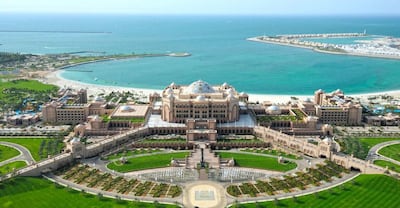
Emirates Palace has 394 rooms including 92 suites and 22 residential suites for heads of state. It boasts 7,000 doors, 128 kitchens, a marina, four helipads and the interior is decorated with 26,247 metres of 22-carat gold leaf (it even has its own in-house gold leaf specialist). Outside are verdant gardens with 8,000 trees that have attracted more than 150 species of birds, while staff harvest 20 tonnes of dates from its palms every year. Emirates Palace was built on 1,000,000 square metres of reclaimed land — equalling half the area of Monaco, the hotel says.
More than 15 years after it opened, the hotel is now looking to the future. Mandarin Oriental took over as operators in 2020 and a new era began.
Mr Heyes worked on other landmark projects such as the refurbishment of Claridge’s Hotel in London but Emirates Palace remains a highlight of his career.
“We used to stay at the Hilton and walk across to the site and see this beautiful palace coming up out of the ground,” he said, of the early design phases.
“It was quite clearly a career-defining moment for me. Even today, when I come up to that main drive and get out of the car, I think, 'Wow!' I’m very proud of it.”
A version of this article was first published on August 14, 2022
